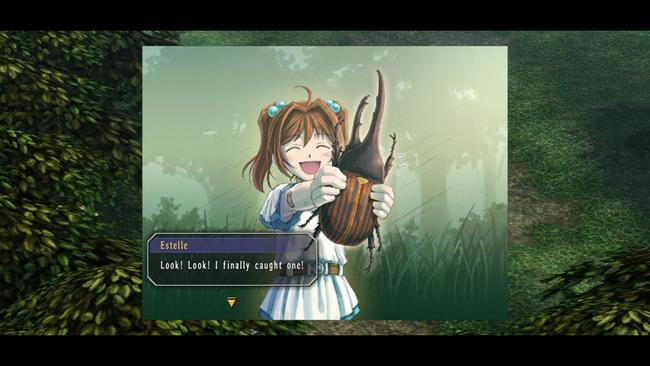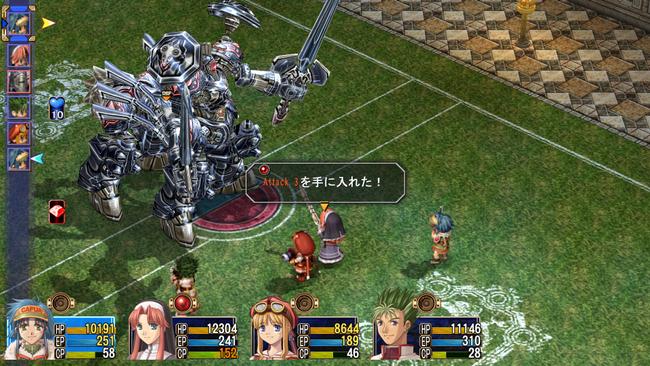
The Legend of Heroes: Trails in the Sky the 3rd Review
XSEED first introduced many of us to Trails series when the first Trails in the Sky was localized way back in 2011 for the PlayStation Portable. That entry, however, was only the initial portion of a large trilogy of stories (which in itself is only a subset of of an even larger mythos of connected stories) and left many people clamoring for the continuation of the world introduced in that game. While it took nearly 4 years for the sequel to be localized, here we are less than 2 years after with the final part of the trilogy, aptly named The Legend of Heroes: Trails in the Sky the 3rd.

While Trails in the Sky the 3rd is, for the most part, a direct continuation of the stories told in the first two games of the trilogy (First Chapter and Second Chapter), it does take on a different format in both the way the game is structured mechanically and how its story is told.
While FC and SC were fairly traditional JRPGs with a turn-based battle system, an overarcing narrative, and the typical mix of dungeon exploring, plot exposition, and general questing, the 3rd is more of an anthology of sorts. Focusing on the character of Kevin Graham, introduced in SC, and his new coworker Ries Argent, the 3rd forgoes the world of the first two games of the series and instead opts for one long continuous dungeon - Phantasma.
Phantasma is a single location comprised of various "planes" which serve as the game's chapters for the most part (in the same way the different Liberl cities served as chapters in FC). While the origin and explanation for Phantasma are given in game, it serves as a mostly linear pathway for the story to unfold within.
While I was initially disappointed by the extent of this departure, I found myself more appreciative of its deviation from the norm. While the game does offer a main plotline involving Kevin's backstory, that portion is only about half of the narrative told throughout the game. The remaining half comes in the form of "Doorways".
Inside Phantasma are two dozen or so isolated Doors that depict various events and stories throughout the familiar Liberl Kingdom, and even give a bit of a peek at the larger world of Zemuria. Often these Doors cannot be opened at first glance and require specific characters, items, or other conditions to be met - such as specific quartz or number of battles fought.
Many of these events take place during the interval between SC and the 3rd, but not all of them. Some go back to the origin stories of characters like Estelle, Joshua, Schera, and other party members from the series and others introduce players to other components outside of the Liberl region. There are even minigames. It's wild.
While the door types are loosely defined within the game itself (ie, "Moon" doors are longer events while "Sun" doors are minigames), the actual content of each area are highly varied. For instance, a Door might be just a cutscene without player involvement at all, and another Door will require navigating an optional dungeon with an unexpected set of characters.
While the Doors are entirely optional events, they are exactly the sort of continuation of character stories that any trilogy would be expected to undertake. I strongly consider anyone playing Trails in the Sky the 3rd to seek out most, if not all, of these events.

The one weakness of the game's storytelling comes coupled with the nature of this entry as a quasi-compilation of smaller more personal stories. This manifests itself in a way that comes across as playing through a series of "who's who" sort of events both within the game's main location (Phantasma), as well as the Doors. For the side stories, this is perfectly acceptable because the goal of those sequences is to flesh out a world that players are already familiar with - providing new details and perspectives.
However for the main story focusing on Kevin and Ries, the divergences into familiar faces and themes comes across a bit like unnecessary padding. Early on in the game, you will have to retread through familiar areas under the guise of them being Phantasma illusions, and mid-to-late game encounters are riddled with battles against familiar faces in the guise of having to overcome specific trials in order to proceed through Phantasma. While the in-verse explanation is adequate, it still comes across as a bit hackneyed to face off again against past foes (or rather, illusory representations of consequential characters, it's sloppy).
As the format of the 3rd was becoming clear to me during the first few hours of gameplay, I wasn't sure how well my interest would hold up. The strength of the series has always been within the boundaries of storytelling, characterization, and world-building. I wasn't sure how well that would translate to sectioned off zones through enumerable doors divorced from the rest of the game. While the combat and primary gameplay mechanics in the trilogy have been functional, I wasn't sure they could carry the game on their own.

However, the 3rd does two things that help strengthen the game on this front: one, the characters start at an elevated level above 90, which means that every character you receive will already have a full set of orbments, arts, and crafts. In tandem with this, the game also introduces characters into your party at a rapid clip. You'll have over a dozen options of characters from fairly early on in the game, with not a lot of restrictions in place about who you can bring in at any given time.
What these two things together give the 3rd is a mechanical non-linearity that's not nearly as prevalent in the earlier titles. Players will have the flexibility needed to put together different teams, find characters that work well (and not so well) together, and focus characters into specific disciplines or spells. While having so many characters initially seemed overwhelming, the fact that they come on-board with their own strengths and crafts means that there is a lot of experimentation to be had.
When a lot of the primary progression of the game involves trekking through dungeons that are, for the most part, fairly straightforward, having a high level of input over your team composition and strategy is fairly engaging. I often found myself swapping characters in and out of party not out of obligation, but out of interest.

Even on the normal difficulty mode, some of the battles presented in the main game involved a level of strategy that I didn't really encounter in the earlier entries; it often didn't stretch beyond utilizing elemental weaknesses and abusing S-crafts. While the 3rd could be similarly trivialized on a lower difficulty level or through copious level-grinding, I feel that it did not succumb to this weakness to the same extent.
For instance, one end-of-chapter fight involved a boss that seemingly had a far greater number of strengths than weaknesses: having the ability to inflict several status effects, heal itself without casting a spell (therefore could not be impeded), and all sorts of nasty tricks. I had to think about all of the options available to me to mitigate damage, prepare for the eventual opening, and keep good track of the battle-order. Other fights had me digging through some of the game's art lists to learn how to invoke Guard status at the ready and lower enemy defenses.
I found a level of micromanagement here that I enjoyed due to this push to think more strategically and have an easier time with the later parts of the game. Changing the difficulty level options could further tune this to suit the player's need depending on their priorities, and the level of management they want to undergo.
The Legend of Heroes: Trails in the Sky the 3rd's different gameplay structure and shifted narrative focus can take some getting used to, especially when coming off the formula from prior Trails in the Sky entries. However, once I was acclimated to the new radical shifts in structure and gameplay, I found that the 3rd carries all the charm and strengths of the previous game and goes beyond that. Trails in the Sky the 3rd is an excellent conclusion that not only sends off the Liberl arc on an exceptionally strong note, but also serves as a great teaser of the overall Trails world.